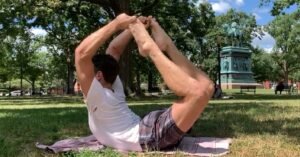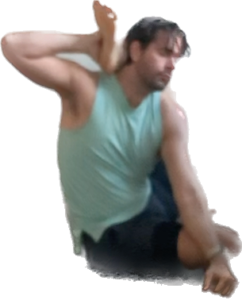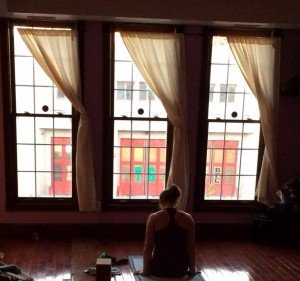Embracing the Chaos Muppet Within: The Art of Teaching Ashtanga Yoga
As an Ashtanga Yoga teacher, I’ve always felt a bit like a square peg trying to fit into a round hole. I was out with a buddy who’s been practicing yoga with me for a while, and he nailed it when he labeled me a ‘chaos Muppet’. I thrive in spontaneity, relish the unpredictable, and often approach life with a certain degree of joyful recklessness. Yet, Ashtanga Yoga, particularly in the Mysore style, is the epitome of order – structured, disciplined, and meticulously precise. At first glance, it seems like an odd match, but here’s the catch: this apparent contradiction is actually the source of a beautiful, dynamic balance.
The concept of “chaos” and “order” Muppets is a popular framework used to categorize the characters from the Muppets, created by Jim Henson. This framework was popularized by writer Dahlia Lithwick in a piece for Slate, where she used it metaphorically to describe different personality types.
- Chaos Muppets are seen as unpredictable, wild, and often acting without thinking about the consequences. They are the free spirits and often bring a sense of spontaneity and unpredictability. Classic examples of chaos Muppets from the show include Animal, Cookie Monster, and Miss Piggy.
- Order Muppets, on the other hand, are methodical, rule-following, and thrive on structure and routine. They often serve as the straight man in comedic scenarios and are seen as more responsible or level-headed. Examples include Kermit the Frog, The Count, and Scooter.
This categorization has been used beyond the Muppets to describe personality types in a playful way, capturing the balance between structure and spontaneity in human nature. It’s a fun and accessible way to think about different temperaments and behaviors.
(You’ll note Cookie and Count in the Featured Image– the Count is like the PERFECT order muppet for ashtanga)
Running a Mysore room as a chaos Muppet has its unique set of challenges. The practice itself demands consistency, adherence to a sequence, and a progression that’s anything but haphazard. Every day, as I roll out my mat and start the familiar chant, I’m reminded of the order that anchors this practice. Yet, within this framework of order, I find my chaos – the space to be creative, to adapt the practice to each individual, and to bring a sense of freshness and spontaneity to the room.
But why does this matter? Why strive for a balance between chaos and order in a yoga room? Well, for starters, I believe that this interplay creates a more holistic and inclusive space. A room that’s too rigid can be stifling, intimidating. It can feel unwelcoming to those who don’t naturally fit into a strict mold. On the flip side, a space with no structure can lack direction, leaving practitioners ungrounded and uncertain.
In my journey as a teacher, I’ve found that embracing my chaos Muppet nature allows me to connect with students in a more authentic way. It lets me meet them where they are, with all their unique quirks and challenges. I bring the spontaneity, the unexpected adjustments, and the occasional off-script moments that keep the practice alive and engaging.
At the same time, the discipline and structure of Ashtanga Yoga keep me grounded. They provide a framework within which my chaos can dance without turning the practice into a free-for-all. It’s a delicate balance, one that requires constant attention and adjustment.
This balance, this dance between chaos and order, is what makes a Mysore room flourish. It’s about creating a space where structure meets spontaneity, where discipline intersects with playfulness. And while I may have a vested interest in believing in this balance – after all, it’s how I teach – I’ve seen firsthand how it brings out the best in my students and in myself.
So, to all my fellow chaos Muppets out there who might feel out of place in the orderly world of Ashtanga Yoga, I say: embrace your chaos. Bring your unique energy to the practice. And to those who naturally lean towards order, don’t be afraid to let a little chaos in. It might just be the thing that takes your practice – and your teaching – to a whole new level.









